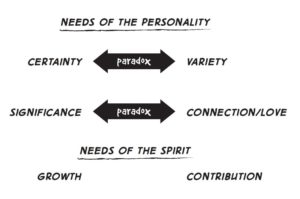 Building a cybersecurity team comes with many challenges. So many factors are impacting the ability to do this effectively and efficiently. The cybersecurity workforce shortage means more competition for talent, but you can’t be confident all those vying for positions have the hard and soft skills to succeed and thrive. On top of all this, the threat landscape keeps expanding as cybercriminals develop new tools and strategies to exploit weaknesses.
Building a cybersecurity team comes with many challenges. So many factors are impacting the ability to do this effectively and efficiently. The cybersecurity workforce shortage means more competition for talent, but you can’t be confident all those vying for positions have the hard and soft skills to succeed and thrive. On top of all this, the threat landscape keeps expanding as cybercriminals develop new tools and strategies to exploit weaknesses.
So, what can you do as a cybersecurity leader? As someone who’s been in the position, I have some insights to share on how to accomplish this. Keep reading for strategies, tips, and info about the Secure Methodology as a framework for constructing a cybersecurity team.
Steps to Take to Build a Sustainable Cybersecurity Team
Where should you start on this journey? Should you jump right into recruiting and hiring? I would urge you to first develop a strategy, define the tools you need, and create some principles for the culture you hope to cultivate.
To do this, follow these steps:
Acknowledge that cybersecurity is a people problem and let that guide your strategy.
It’s easy to blame the breaches and attacks in the cyber world on technology. Without it, there wouldn’t be an issue, but categorizing it only this way is a fallacy. Behind every attack is a person. Every defense also has human intelligence executing it, and most causes of cyber incidents relate to errors, mistakes, or intentions of someone.
It’s very much a people problem, and that fundamental principle should guide your team-building strategy. Yes, there are lots of great cyber tools out there that are leveraging AI and enabling automation. You need those, but the people charged with managing them need knowledge and skills to do so. Those skills must include soft ones, as the human issue in cybersecurity won’t find a resolution without staff that cannot communicate or collaborate.
There is a current soft skills gap in every industry, including cybersecurity. The people who are a good fit for your roles may not possess these. If they are curious to learn and motivated to evolve, they can be great additions to your team.
Ensure the bad guys are cybercriminals, not internal.
Another element of creating a cybersecurity team is to eliminate the “us vs. them” mentality that often happens between technical and business folks. You’re all on the same side, but much of that can get lost in translation. The business side may not take cybersecurity as seriously as they should, frustrating cyber professionals. There’s animosity on your side, too, as your team may resent others, especially when they have questions and challenges.
It’s critical to put the target back on the real enemy’s head. There must be balance and cooperation between business and technical groups. You don’t want to bring someone on who fails to understand the perspective of others. Employees like this will degrade the trust and credibility of your team and do anything to avoid being wrong. You can spot this in how they respond to queries about collaborating and if they do a lot of posturing.
Look for a wide range of skills.
You have to define the requirements you want in your team, which should include various abilities and aptitudes. In doing so, you have to shift your definition of qualified. The majority of cyber leaders believe applicants don’t have the right qualifications, according to the State of Cybersecurity 2022 report. What they say people lack includes hands-on experience and training along with credentials and degrees.
The hands-on part makes sense because you want people to have real-world interactions. One cannot get this without opportunity. It’s especially true for younger generations, who we need to join the field. These people could be bright and eager to learn, making them excellent hires.
Credentials and degrees can demonstrate skill sets but not always. Often, people look great on paper because of these achievements but lack the knowledge to apply what they learned in classes. The learning may also be insufficient, especially for courses that validate aptitude based on multiple-choice tests. You can only be confident in one thing for those passing these — they can memorize answers. Beware of these “paper tigers.”
Instead, use skills-based hiring models. This approach focuses on a candidate with specific competencies that directly relate to the work. It involves soft and hard skills.
Develop your recruitment strategy on skills-based hiring.
Building a strong, multi-dimensional team requires a mix of people. Not everyone has to be strong in everything. You can create a staff who can learn from each other and you.
With skills-based hiring, you can:
- Identify people with abundant soft skills and a desire to improve their technical skills.
- Find candidates who have familiarity in all areas of cybersecurity but don’t have real-world experience yet and develop them.
- Attract people newly entering the workforce and those starting over, which can help you build that right mix.
- Assess people holistically instead of only looking at their technical aptitude.
- Reduce barriers for people getting a shot at a cyber career who didn’t attend college.
Putting together a team of cyber professionals in this manner can lead to a strong and healthy culture. It can also decrease risk and ensure that cybersecurity has a seat at the table to influence business decisions. You simply won’t be able to do that if you hire with bias found in the old ideals of “qualified.”
All these ideas and opportunities align directly with the Secure Methodology, which is a seven-step process of transforming people with purely technical and closed mindsets into great communicators and partners.
The Secure Methodology and Building Your Cybersecurity Team
The Secure Methodology is the foundation for creating and maintaining a team that thrives and is adaptable. I based it on my own experiences and observations of what was going wrong in cybersecurity, which is a people problem.
Here’s a glimpse of each step and how it can support your hiring strategy:
Awareness
The process kicks off with awareness. It pertains to both self and others. Without it, people don’t understand the impact of their behavior on relationships and communication. It’s about opening up people’s blind spots.
Will every candidate already have awareness? And how do you evaluate this? Most people lack awareness to some extent, so it often requires development. You can assess someone’s state of awareness or willingness to get there by asking them to reflect and tell you about a challenging time and how they handled their interactions with others.
Mindset
Mindset is critical for anyone’s ability to grow and evolve. Those with a fixed mindset will resist any type of change. It’s a problem for technical people because they desire absolutes, but cybersecurity is a dynamic and volatile field! It’s kind of a paradox, so be observant of how people communicate about themselves and their experiences. This can give you a good idea of how open their mindset is and if they’ll be a good fit for your team.
Acknowledgment
Next is acknowledgment, which you’ll want to make a pillar of your culture. Technical employees crave feedback and understanding of their place in the business. Of course, they must also be receptive to it because it won’t always be positive. You also want to know if someone can acknowledge the work and contributions of others within the group or outside of it.
Communication
The fourth step is communication, and it’s the most important concept when creating a team. We can’t do anything well without honest, transparent, and consistent communication.
Being a good communicator doesn’t just mean being articulate. In the world of cybersecurity, your team must be clear about what they need, the challenges they face, and what’s really happening in the threat landscape. They also have to be active listeners to be good collaborators.
You can likely assess someone’s communication skills within the context of your conversations. Look for those who can clearly express big ideas and don’t use geek speak. If they show signs of this and seem to be listening to you, it’s a good sign, and you can continue to help them master this skill.
Monotasking
Monotasking is the fifth step, and it means concentrating on one task or project at a time without disruptions. It’s hard to find anyone who monotasks much in the workforce, where we seem always to be doing five things at once.
You can talk about monotasking in interviews to see someone’s reaction to it. Do they think it’s bad for productivity or impossible? Emphasize that you believe it to be a critical component of the workday because it enables critical thinking and problem solving, which are two huge assets in cybersecurity.
Empathy
Empathy is the sixth step, and in this connotation, it means the ability to understand someone’s perspective and feelings. It’s one of the hardest things for anyone to build, and yes, we must learn it. We are not innately empathetic. Achieving this can help with stress, burnout, and frustration toward others.
In speaking with prospective hires, ask them about a time when empathy would have been a good response to a problem. The answers they give can reveal a lot about their inner workings.
Kaizen
The last step is Kaizen. It’s a Japanese term that means “change for the better.” It never ends because continuous improvement is forever. When hiring, you want to put people on your team who believes in this approach to work.
Ready to learn more about the Secure Methodology? Start by reading The Smartest Person in the Room and explore the Secure Methodology course.
 Adaptability and the ability to evolve are core components of cybersecurity. To combat threats and mitigate risk, an organization has to make security a priority and a pillar. Managing this dynamic environment and ensuring these things are part of a company’s foundation means cybersecurity deserves a seat at the leadership table. Cybersecurity leadership is essential to any business’ pursuit of cyber resilience.
Adaptability and the ability to evolve are core components of cybersecurity. To combat threats and mitigate risk, an organization has to make security a priority and a pillar. Managing this dynamic environment and ensuring these things are part of a company’s foundation means cybersecurity deserves a seat at the leadership table. Cybersecurity leadership is essential to any business’ pursuit of cyber resilience. The cybersecurity talent pipeline is facing the same challenges as many industries. A strong job market and low unemployment mean that many well-qualified professionals aren’t actively seeking new jobs. As a result, cybersecurity needs to look to the latest generation entering the workforce, Gen Z. Gen Z is a unique generation, which makes the ability to
The cybersecurity talent pipeline is facing the same challenges as many industries. A strong job market and low unemployment mean that many well-qualified professionals aren’t actively seeking new jobs. As a result, cybersecurity needs to look to the latest generation entering the workforce, Gen Z. Gen Z is a unique generation, which makes the ability to  Communication is the core of any organization, department, or process. It’s a topic I talk about extensively in the world of cybersecurity. That’s why it’s step four of the Secure Methodology and why it’s a critical aspect of every effort.
Communication is the core of any organization, department, or process. It’s a topic I talk about extensively in the world of cybersecurity. That’s why it’s step four of the Secure Methodology and why it’s a critical aspect of every effort. When making any decision, intelligence certainly plays a key role. However, often it’s only the logical, rational side of intelligence that people rely on, especially in worlds like cybersecurity. It’s a field that’s ones and zeroes, so many would think there’s no heart involved. Except those on the other side of the battle are using all their intelligence, something I call total intelligence.
When making any decision, intelligence certainly plays a key role. However, often it’s only the logical, rational side of intelligence that people rely on, especially in worlds like cybersecurity. It’s a field that’s ones and zeroes, so many would think there’s no heart involved. Except those on the other side of the battle are using all their intelligence, something I call total intelligence.
 Being a great technical leader is more than just about strategy. Many people believe that if a leader is smart enough and has the right skills, they will be great at their job. In reality, leading with intelligence doesn’t always guarantee results.
Being a great technical leader is more than just about strategy. Many people believe that if a leader is smart enough and has the right skills, they will be great at their job. In reality, leading with intelligence doesn’t always guarantee results.
